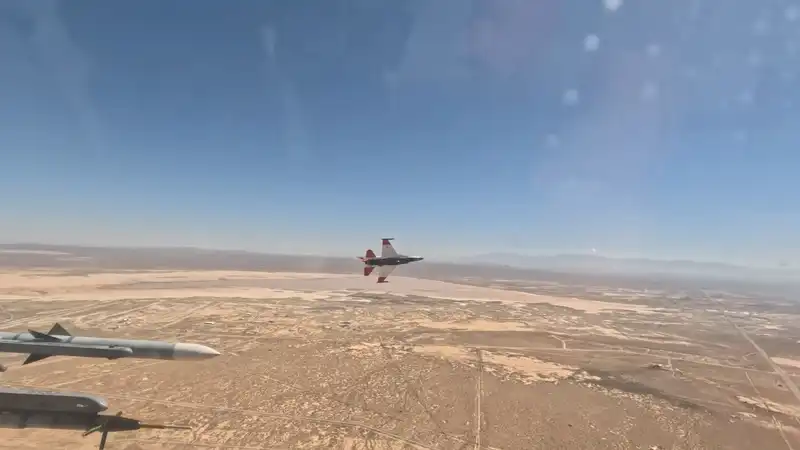The rise of AI has many far-reaching implications for the future of humanity, but perhaps of greatest concern is its potential military use. The U.S. military has conducted an experiment in which AI-controlled F-16s were dogfighted by actual test pilots, but the results of which one "won" are still unknown.
The test aircraft, catchily named X-62A Variable Stability In-flight Simulator Test Aircraft, or "VISTA" for short, is essentially a modified F-16 fighter controlled by AI, and has been used to demonstrate artificial pilot capabilities It has been test flown many times before to demonstrate the capabilities of its artificial pilot (via The Telegraph). Last September, the AI was released into the sky to test its dogfighting capabilities against real human opponents.
In a press release, the U.S. Air Force Test Pilot School and DARPA revealed that before conducting air-to-air simulated combat with another F-16 over Edwards Air Force Base in California last year, they first tested various defensive maneuvers with an AI-controlled jet to establish safety in flight The AI-controlled aircraft and its conventionally piloted opponent came within 2,000 feet of each other in the simulated combat. This sounds like a reasonable distance until you realize that they were flying at 1,200 miles per hour. Ew.
AI algorithms analyze real-time data and make quick decisions in the air, enabling them to dogfight with real-life opponents and respond quickly to their reactions and maneuvers in a way that reflects the instincts of a trained fighter pilot. Since the first tests, a series of safety protocols have been developed to avoid mid-air collisions and allow "engagement within human visual range."
However, according to the Air Force, test pilots have not had to use safety systems during dogfight testing.
It is not clear whether the dogfights tested were purely limited to aerial maneuvers or whether they included simulated weapons fire, but the previous AI developed by Heron Systems as part of the DARPA tournament, in five of the five scenarios tested It was able to defeat human pilots.
"It is very easy to look at the X-62A ACE program and see that it can dogfight under autonomous control, but that misses the point. Dogfighting was a problem that needed to be solved so that we could begin to test our autonomous artificial intelligence systems in the air. All the lessons we are learning apply to any task we can give to autonomous systems."
While this demonstration may be in the name of creating autonomous systems for a variety of applications, it is hard to imagine that the results of these tests will not be of great interest to the military with regard to real combat scenarios.
Fighter pilots are a valuable asset and require a lot of raw capability and years of training to be effective. The idea that it simply takes a plane and a suitably sophisticated AI to conduct aerial combat without risking human life will undoubtedly be of interest to military officials around the world; AI will fly, and this may be just the beginning of AI's combat capability tests in the years to come.


Comments